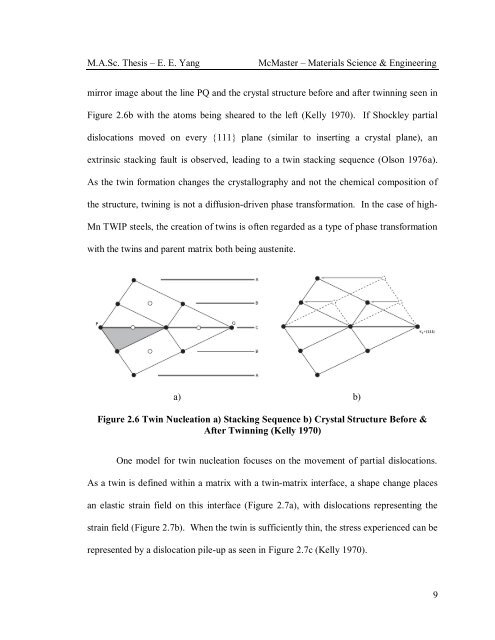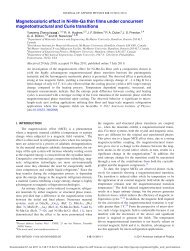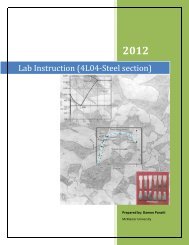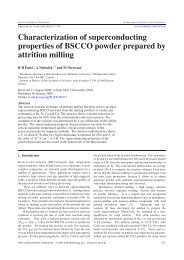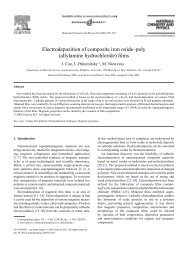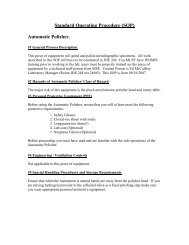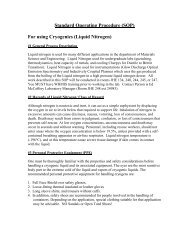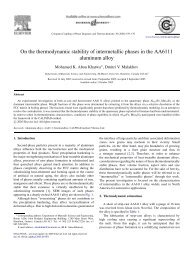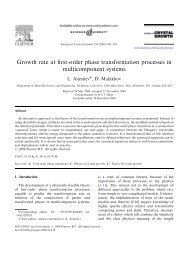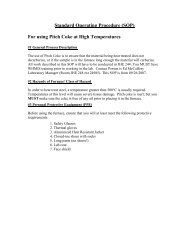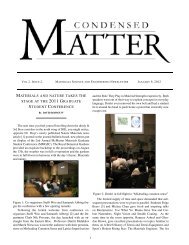the effect of carbon content of the mechanical properties - McMaster ...
the effect of carbon content of the mechanical properties - McMaster ...
the effect of carbon content of the mechanical properties - McMaster ...
Create successful ePaper yourself
Turn your PDF publications into a flip-book with our unique Google optimized e-Paper software.
M.A.Sc. Thesis – E. E. Yang <strong>McMaster</strong> – Materials Science & Engineering<br />
mirror image about <strong>the</strong> line PQ and <strong>the</strong> crystal structure before and after twinning seen in<br />
Figure 2.6b with <strong>the</strong> atoms being sheared to <strong>the</strong> left (Kelly 1970). If Shockley partial<br />
dislocations moved on every {111} plane (similar to inserting a crystal plane), an<br />
extrinsic stacking fault is observed, leading to a twin stacking sequence (Olson 1976a).<br />
As <strong>the</strong> twin formation changes <strong>the</strong> crystallography and not <strong>the</strong> chemical composition <strong>of</strong><br />
<strong>the</strong> structure, twining is not a diffusion-driven phase transformation. In <strong>the</strong> case <strong>of</strong> high-<br />
Mn TWIP steels, <strong>the</strong> creation <strong>of</strong> twins is <strong>of</strong>ten regarded as a type <strong>of</strong> phase transformation<br />
with <strong>the</strong> twins and parent matrix both being austenite.<br />
a)<br />
Figure 2.6 Twin Nucleation a) Stacking Sequence b) Crystal Structure Before &<br />
After Twinning (Kelly 1970)<br />
One model for twin nucleation focuses on <strong>the</strong> movement <strong>of</strong> partial dislocations.<br />
As a twin is defined within a matrix with a twin-matrix interface, a shape change places<br />
an elastic strain field on this interface (Figure 2.7a), with dislocations representing <strong>the</strong><br />
strain field (Figure 2.7b). When <strong>the</strong> twin is sufficiently thin, <strong>the</strong> stress experienced can be<br />
represented by a dislocation pile-up as seen in Figure 2.7c (Kelly 1970).<br />
b)<br />
9


